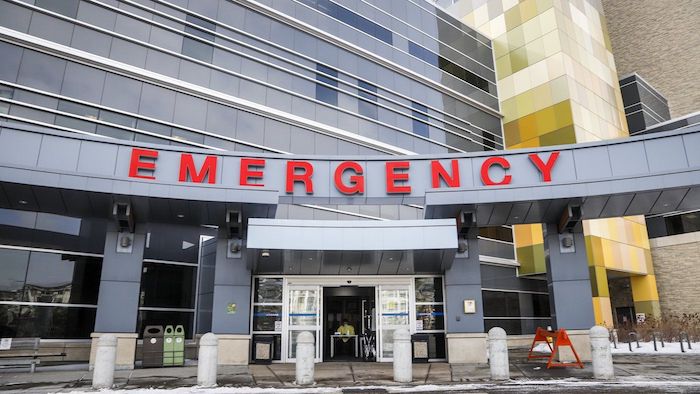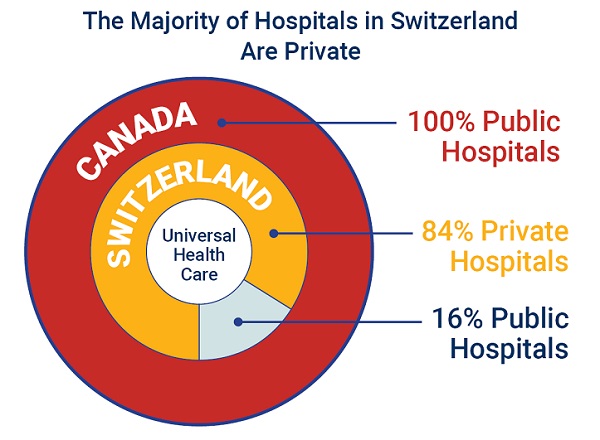Alberta
Wait times down. Better EMS response times. Province releases results of 90 day Health Care Action Plan

90-day HCAP update: Health care wait times dropping
Albertans are spending less time waiting for the medical care they need since the Health Care Action Plan (HCAP) was launched.
Alberta has the best front-line health care workers in the world, and Alberta’s government will work to have the right supports in place to ensure Albertans get the care they need when and where they need it. When Alberta’s HCAP was launched on Nov. 17, Alberta’s government identified four different areas on which it would work with Alberta Health Services to improve. After 90 days, Albertans are seeing improvements in all four areas.
“We are delivering on our promise to reduce wait times, add more front-line staff and keep Albertans updated on the progress we’re making. There is no one silver bullet to fixing our health care system, and change will take time. But positive change is happening, and Albertans are receiving better access to the level of care they need when and where they need it. We appointed Dr. John Cowell as official administrator to speed up improvements and make sure Albertans are getting high quality of care sooner and we are seeing some good, early results.”
Improving EMS response time
In an emergency, every minute counts and over the past three months, ambulances have been responding faster to emergency calls. Improved ambulance times means that Albertans are receiving the urgent care they need from highly skilled paramedics more quickly.
From November to the end of January, EMS response times for most urgent calls improved across the province in metro, urban, rural and remote areas. The decrease in EMS wait times across the province can be broken down to:
- 17 minutes in metro and urban areas, down from 21.8 minutes
- 19.2 minutes in communities with more than 3,000 residents, down from 21.5 minutes
- 34.9 minutes in rural communities with fewer than 3,000 residents, down from 36 minutes
- 57.5 minutes in remote communities, down from 63.9 minutes
In addition to improved EMS wait times, more ambulances have been available, meaning that red alerts, which indicate a lack of ambulance availability at a point in time, were substantially reduced in Edmonton and Calgary:
- Edmonton has seen a 92 per cent reduction in the number of alerts issued in January 2023 compared with January 2022.
- Calgary has seen a 60 per cent reduction over the same period.
The initiative to triage 911 calls to the most appropriate level of care has also played a role in ensuring paramedics are able to answer the most urgent calls. Since the program was launched in January, 1,600 callers with non-urgent conditions were transferred from 911 to Health Link registered nurses. Alberta’s government is pleased to see progress on its aim to reduce EMS wait times and will continue working to further decrease the amount of time an Albertan waits for an ambulance to arrive.
“The good news is wait times are trending in the right direction and Albertans are getting the care they need more quickly. More doctors, nurses and paramedics are available to help Albertans, and more help is on the way as Alberta continues to add front-line workers for ambulances, ERs and across the system.”
Reducing surgery wait times
Alberta’s government continues its work to reduce surgical wait times for Albertans. Part of a strong health care system is ensuring that Alberta patients are receiving their surgeries within clinically recommended times. Since November 2022, the number of patients waiting longer than the clinically recommended time has decreased by 9.4 per cent.
Alberta’s chartered surgical facilities are helping to reduce wait times and ensure Albertans are receiving the surgeries they need to improve their health and their quality of life. Nearly 7,000 more publicly funded surgeries were completed at chartered surgical facilities in January compared with November, a number that includes orthopedic and eye surgeries. As this work continues, AHS is focused on ensuring that those patients who have waited the longest for surgery are prioritized.
“I would like to thank our incredible front-line workers as well as our AHS leaders, who have worked extremely hard to identify and implement improvements to our health care system, with focus on our priority areas. We have emerged from an extremely challenging time, and I am optimistic that we will continue to see improvements that will benefit all Albertans whenever they need our care and support.”
Decreasing emergency room wait times and improving access to care
Alberta’s government is also encouraged to see that in January, more Albertans received care sooner when they visited emergency departments. Progress in lowering emergency department wait times has been seen in the two measures:
- Wait time to see a doctor in an emergency department decreased by almost 10 per cent provincially since November.
- Time spent in an emergency department for admitted patients has been reduced by about five per cent.
There is still work to be done to ensure Albertans have lower wait times in emergency rooms across the province, and Alberta’s government will continue to make policy and funding decisions to see those improvements. In January, the number of assessed patients waiting in the province’s top 14 hospitals for a continuing care space was 179, lower than the 218 patients in the 2018-2019 fiscal year, and also lower than the 253 patients waiting in November 2022. A number of changes have helped to spur progress on emergency department wait times from November to the end of January:
- AHS opened 255 new acute care beds (non-intensive care unit) across the province.
- More beds in continuing care facilities have been opened – freeing more hospital beds for urgent care: 55 new long-term care beds, 292 new designated supportive living beds and 38 new community addiction and mental health beds.
- Additionally, 36 new transition beds for people discharged from ERs in Edmonton who are experiencing homelessness will be opened this year.
Empowering health care workers to deliver health care
Alberta continues to hire more health care workers to support key areas. AHS is adding 420 more positions in emergency rooms, acute care, EMS and community care, on top of the nearly 400 front-line and support staff hired since November. If passed, Budget 2023 would provide $158 million for a new Health Workforce Strategy to make sure the province has the medical professionals needed and to improve the work environment.
Alberta is making good progress on increasing the number of highly skilled doctors, nurses, paramedics, nurse practitioners and other health allied professionals in the province:
- AHS added 800 registered nurses, licensed practical nurses and health care aides in 2022.
- Since 2019, AHS has added 5,800 front-line staff, including 1,800 registered nurses and 300 paramedics.
- AHS recruited 28 physicians to rural Alberta and added 278 more registered nurses, licensed practical nurses and health care aides since November.
- EMS added 39 front-line staff, including paramedics and emergency communications officers, over the last three months.
- 80 additional full-time paramedic positions are being recruited, and AHS is transitioning 70 current temporary full-time EMS positions to regular full-time.
- AHS is currently hiring 114 full-time nursing staff for emergency department teams to speed up EMS transfers and free up paramedics to respond to more calls.
Alberta
Alberta announces citizens will have to pay for their COVID shots

From LifeSite News
The government said that it has decided to stop ‘waste’ by not making the shots free starting this fall.
Beginning this fall, COVID shots in the province will have to be pre-ordered at the full price, about $110, to receive them. (This will roll out in four ‘phases’. In the first phases COVID shots will still be free for those with pre-existing medical conditions, people on social programs, and seniors.)
The UCP government in a press release late last week noted due to new “federal COVID-19 vaccine procurement” rules, which place provinces and territories as being responsible for purchasing the jabs for residents, it has decided to stop “waste” by not making the jab free anymore.
“Now that Alberta’s government is responsible for procuring vaccines, it’s important to better determine how many vaccines are needed to support efforts to minimize waste and control costs,” the government stated.
“This new approach will ensure Alberta’s government is able to better determine its overall COVID-19 vaccine needs in the coming years, preventing significant waste.”
The New Democratic Party (NDP) took issue with the move to stop giving out the COVID shots for free, claiming it was “cruel” and would place a “financial burden” on people wanting the shots.
NDP health critic Sarah Hoffman claimed the move by the UCP is health “privatization” and the government should promote the abortion-tainted shots instead.
The UCP said that in 2023-2024, about 54 percent of the COVID shots were wasted, with Health Minister Adriana LaGrange saying, “In previous years, we’ve seen significant vaccine wastage.”
“By shifting to a targeted approach and introducing pre-ordering, we aim to better align supply with demand – ensuring we remain fiscally responsible while continuing to protect those at highest risk,” she said.
The UCP government said that the COVID shots for the fall will be rolled out in four phases, with those deemed “high risk” getting it for free until then. However, residents who want the shots this fall “will be required to pay the full cost of the vaccine, the government says.”
The jabs will only be available through public health clinics, with pharmacies no longer giving them out.
The UCP also noted that is change in policy comes as a result of the Federal Drug Administration in the United States recommending the jabs be stopped for young children and pregnant women.
The opposite happened in Canada, with the nation’s National Advisory Committee on Immunization (NACI) continuing to say that pregnant women should still regularly get COVID shots as part of their regular vaccine schedule.
The change in COVID jab policy is no surprise given Smith’s opposition to mandatory shots.
As reported by LifeSiteNews, early this year, Smith’s UCP government said it would consider halting COVID vaccines for healthy children.
Smith’s reasoning was in response to the Alberta COVID-19 Pandemic Data Review Task Force’s “COVID Pandemic Response” 269-page final report. The report was commissioned by Smith last year, giving the task force a sweeping mandate to investigate her predecessor’s COVID-era mandates and policies.
The task force’s final report recommended halting “the use of COVID-19 vaccines without full disclosure of their potential risks” as well as outright ending their use “for healthy children and teenagers as other jurisdictions have done,” mentioning countries like “Denmark, Sweden, Norway, Finland, and the U.K.”
The mRNA shots have also been linked to a multitude of negative and often severe side effects in children and all have connections to cell lines derived from aborted babies.
Many Canadian doctors who spoke out against COVID mandates and the experimental mRNA injections were censured by their medical boards.
LifeSiteNews has published an extensive amount of research on the dangers of the experimental COVID mRNA jabs that include heart damage and blood clots.
Alberta
Alberta’s grand bargain with Canada includes a new pipeline to Prince Rupert

From Resource Now
Alberta renews call for West Coast oil pipeline amid shifting federal, geopolitical dynamics.
Just six months ago, talk of resurrecting some version of the Northern Gateway pipeline would have been unthinkable. But with the election of Donald Trump in the U.S. and Mark Carney in Canada, it’s now thinkable.
In fact, Alberta Premier Danielle Smith seems to be making Northern Gateway 2.0 a top priority and a condition for Alberta staying within the Canadian confederation and supporting Mark Carney’s vision of making Canada an Energy superpower. Thanks to Donald Trump threatening Canadian sovereignty and its economy, there has been a noticeable zeitgeist shift in Canada. There is growing support for the idea of leveraging Canada’s natural resources and diversifying export markets to make it less vulnerable to an unpredictable southern neighbour.
“I think the world has changed dramatically since Donald Trump got elected in November,” Smith said at a keynote address Wednesday at the Global Energy Show Canada in Calgary. “I think that’s changed the national conversation.” Smith said she has been encouraged by the tack Carney has taken since being elected Prime Minister, and hopes to see real action from Ottawa in the coming months to address what Smith said is serious encumbrances to Alberta’s oil sector, including Bill C-69, an oil and gas emissions cap and a West Coast tanker oil ban. “I’m going to give him some time to work with us and I’m going to be optimistic,” Smith said. Removing the West Coast moratorium on oil tankers would be the first step needed to building a new oil pipeline line from Alberta to Prince Rupert. “We cannot build a pipeline to the west coast if there is a tanker ban,” Smith said. The next step would be getting First Nations on board. “Indigenous peoples have been shut out of the energy economy for generations, and we are now putting them at the heart of it,” Smith said.
Alberta currently produces about 4.3 million barrels of oil per day. Had the Northern Gateway, Keystone XL and Energy East pipelines been built, Alberta could now be producing and exporting an additional 2.5 million barrels of oil per day. The original Northern Gateway Pipeline — killed outright by the Justin Trudeau government — would have terminated in Kitimat. Smith is now talking about a pipeline that would terminate in Prince Rupert. This may obviate some of the concerns that Kitimat posed with oil tankers negotiating Douglas Channel, and their potential impacts on the marine environment.
One of the biggest hurdles to a pipeline to Prince Rupert may be B.C. Premier David Eby. The B.C. NDP government has a history of opposing oil pipelines with tooth and nail. Asked in a fireside chat by Peter Mansbridge how she would get around the B.C. problem, Smith confidently said: “I’ll convince David Eby.”
“I’m sensitive to the issues that were raised before,” she added. One of those concerns was emissions. But the Alberta government and oil industry has struck a grand bargain with Ottawa: pipelines for emissions abatement through carbon capture and storage.
The industry and government propose multi-billion investments in CCUS. The Pathways Alliance project alone represents an investment of $10 to $20 billion. Smith noted that there is no economic value in pumping CO2 underground. It only becomes economically viable if the tradeoff is greater production and export capacity for Alberta oil. “If you couple it with a million-barrel-per-day pipeline, well that allows you $20 billion worth of revenue year after year,” she said. “All of a sudden a $20 billion cost to have to decarbonize, it looks a lot more attractive when you have a new source of revenue.” When asked about the Prince Rupert pipeline proposal, Eby has responded that there is currently no proponent, and that it is therefore a bridge to cross when there is actually a proposal. “I think what I’ve heard Premier Eby say is that there is no project and no proponent,” Smith said. “Well, that’s my job. There will be soon. “We’re working very hard on being able to get industry players to realize this time may be different.” “We’re working on getting a proponent and route.”
At a number of sessions during the conference, Mansbridge has repeatedly asked speakers about the Alberta secession movement, and whether it might scare off investment capital. Alberta has been using the threat of secession as a threat if Ottawa does not address some of the province’s long-standing grievances. Smith said she hopes Carney takes it seriously. “I hope the prime minister doesn’t want to test it,” Smith said during a scrum with reporters. “I take it seriously. I have never seen separatist sentiment be as high as it is now. “I’ve also seen it dissipate when Ottawa addresses the concerns Alberta has.” She added that, if Carney wants a true nation-building project to fast-track, she can’t think of a better one than a new West Coast pipeline. “I can’t imagine that there will be another project on the national list that will generate as much revenue, as much GDP, as many high paying jobs as a bitumen pipeline to the coast.”
-

 Alberta1 day ago
Alberta1 day agoAlberta’s grand bargain with Canada includes a new pipeline to Prince Rupert
-

 Bruce Dowbiggin16 hours ago
Bruce Dowbiggin16 hours agoWOKE NBA Stars Seems Natural For CDN Advertisers. Why Won’t They Bite?
-

 Business1 day ago
Business1 day agoCarney’s European pivot could quietly reshape Canada’s sovereignty
-

 Energy17 hours ago
Energy17 hours agoCould the G7 Summit in Alberta be a historic moment for Canadian energy?
-

 Crime17 hours ago
Crime17 hours agoMinnesota shooter arrested after 48-hour manhunt
-

 Crime2 days ago
Crime2 days agoManhunt on for suspect in shooting deaths of Minnesota House speaker, husband
-

 conflict10 hours ago
conflict10 hours agoIsrael bombs Iranian state TV while live on air
-

 Crime2 hours ago
Crime2 hours agoUK finally admits clear evidence linking Pakistanis and child grooming gangs



